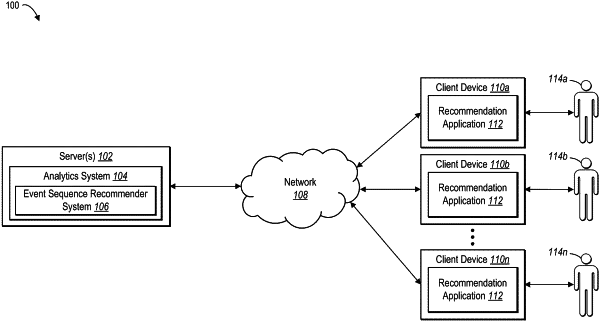| CPC G01C 21/343 (2013.01) [G01C 21/3476 (2013.01); G01C 21/3484 (2013.01); G06Q 10/047 (2013.01); H04W 4/021 (2013.01); H04W 4/024 (2018.02)] | 20 Claims |

|
1. A computer-implemented method comprising:
generating, for a user of a client device, a popular event sequence based on a frequency of use of event sequences by a plurality of prior users represented in a plurality of historical event sequences;
generating a recommended event sequence by using a recommendation machine learning model to select an event sequence for recommendation based on a reward function having a plurality of parameters that were learned during multiple training iterations to provide expected values of recommendations, the recommended event sequence corresponding to a general recommendation provided to client devices users as a default;
receiving, from the client device, one or more user preferences with respect to one or more events by receiving at least one user interaction with one or more interactive elements corresponding to the one or more events via a graphical user interface of the client device;
generating a modified recommended event sequence using the recommendation machine learning model by modifying the reward function to include a weighting factor that modifies the plurality of parameters of the reward function via one or more preference weights that represent the one or more user preferences to modify how the recommendation machine learning model selects the event sequence for recommendation without retraining the recommendation machine learning model; and
providing, for simultaneous display within the graphical user interface on the client device, the recommended event sequence, the modified recommended event sequence, and the popular event sequence.
|